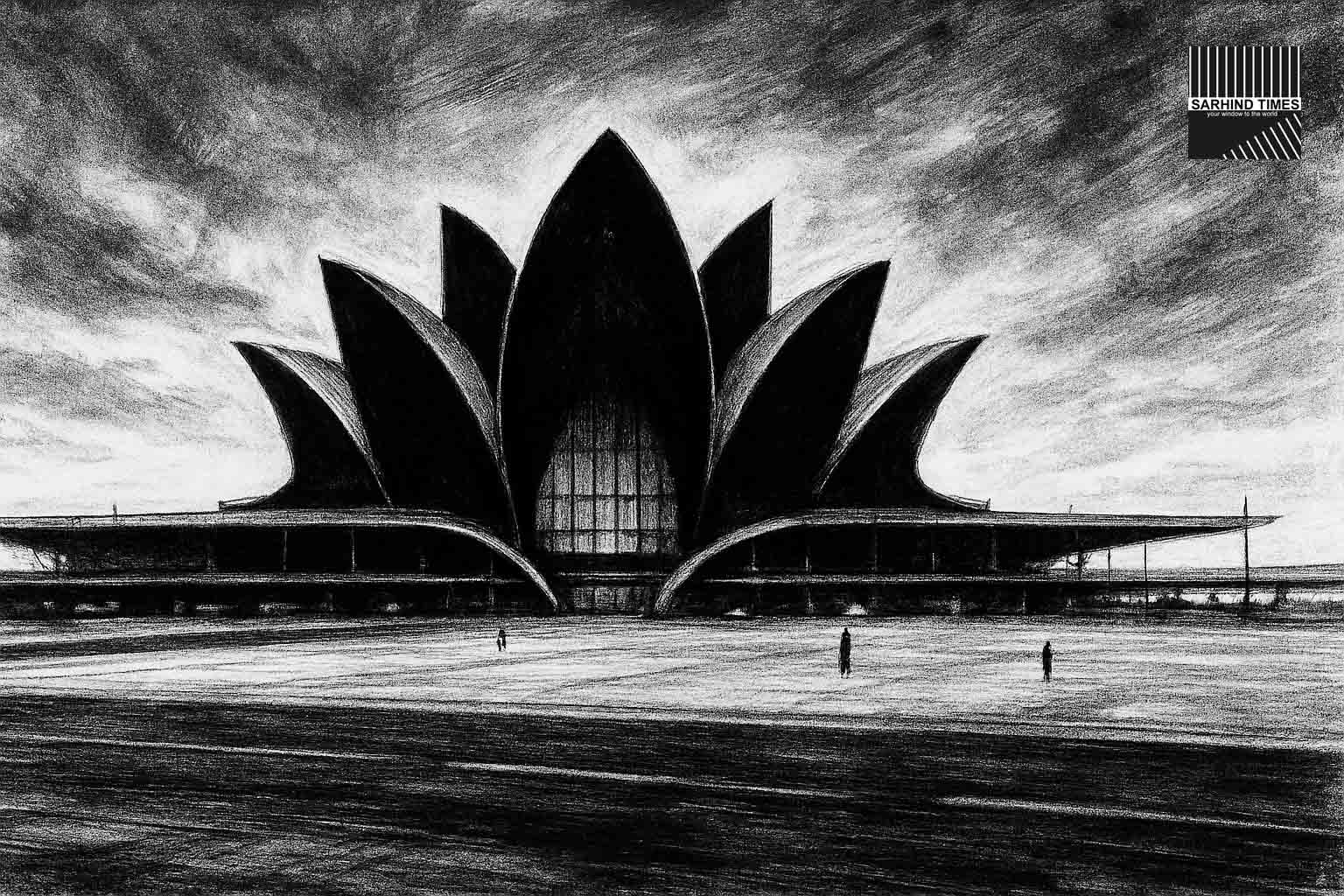Mumbai, 08 October 2025 – In a landmark development for India’s busiest aviation corridor, Prime Minister Narendra Modi today inaugurated the first phase of the Navi Mumbai International Airport (NMIA), heralding a new chapter for the Mumbai Metropolitan Region’s connectivity and capacity. The Adani-led project is poised to take load off the overburdened Chhatrapati Shivaji Maharaj International Airport (CSMIA) and enable fresh domestic, international and cargo operations in a phased rollout.
Spread across approximately 1,160 hectares near Ulwe and Panvel, the airport’s first terminal—with its lotus-inspired architectural aesthetics—is built to handle around 20 million passengers per year initially, along with substantial cargo throughput. The inauguration marks a major milestone after years of planning, delays and infrastructural coordination among multiple agencies.
Officials indicate that trial operations will begin immediately, with a gradual ramping up of airline services. Wider public operations under Phase-1 are expected by late 2025, subject to regulatory clearances, route allocation and operational readiness.
“The new airport will emerge as a modern node for trade, tourism and regional development in western India,” said an aviation insider. “It is designed to decongest Mumbai’s existing airport, create jobs, expedite turnarounds, and give the region greater connectivity to global destinations.”
However, observers caution that the real test lies in airline moves, ground connectivity, and logistics. The sequence for carrier base shifts and first commercial flights will hinge on testing outcomes and regulatory approvals.
🚧 From Vision to Reality: Key Features & Project Backdrop
Greenfield Masterplan & PPP Model
NMIA is being developed under a Public-Private Partnership (PPP) model, with Adani Airport Holdings (74 %) and CIDCO (26 %) as equity partners. Its master plan envisages multiple phases: from Phase-1 throughput (≈20 million passengers) to an ultimate scale of up to 90 million passengers annually by 2032.
The airport’s acreage also anticipates future expansion: plans include additional runways (parallel or cross), more terminals, cargo zones, general aviation / MRO facilities, and multi-modal connectivity.
Design & Digital Innovations
The terminal architecture draws inspiration from a lotus — symbolic but also intended to evoke visual elegance and structural fluidity. From day one, NMIA is being positioned as a fully digital airport—with real-time backend systems, a digital twin, integrated mobile apps for stakeholders, and paperless operations wherever possible.
Smart baggage systems, biometric e-gates, facial recognition, and automated security flows are also part of the technology stack. Sustainability is a core tenet: solar power integration, green building norms, efficient water management, energy forecasting, and ecological landscaping are interwoven into the design.
Connectivity & Integration
A major strength and challenge alike is ensuring seamless connectivity to the airport. NMIA is not a standalone hub but a node in a multimodal network:
- Road: Key access will be via NH 4B and internal roads; specially planned coastal roads (Ulwe Coastal Road, Kharghar Coastal Road) and linkages to Mumbai Trans Harbour Link are on the drawing board.
- Metro / Rail: The airport will interface with the Navi Mumbai Metro (Line 1) and proposed Mumbai Metro Line 8 (Gold Line). Targhar railway station (on the Port Line) is slated to act as the rail interchange for the airport.
- Future Plans: As the expansion progresses, the airport could become a terminus for high-speed rail and possibly water-taxi services along coastal corridors.
Connectivity remains a critical variable: delays or mismatches in road or transit link development could hamper the airport’s efficacy, especially in early phases.
🛫 Operational Phases, Challenges & Airline Strategy
Licensing, Trial Runs & Regulatory Clearances
Just days before the inauguration, NMIA secured its Aerodrome Licence from DGCA, paving the way for operational activation. The licence validates NMIA as a designated “regular place of landing and departure” under the specifications laid out in its Aerodrome Manual.
Initial operations are expected to start in a controlled fashion—fewer flight movements per hour, limited hours, and gradually scaled up. Some forecasts suggest 8–10 movements/hr initially, rising to 30/hr later, with full runway capacity up to 45/hr
Scheduling, route allocations and airline readiness are the gating factors. Airlines will need to orchestrate fleet movements, staff deployment, airport handling systems alignment, slot coordination, ground services, and passenger flow adjustments.
Airlines & Route Strategy
IndiGo is widely expected to be among the first carriers to deploy services from NMIA—reportedly planning 18 daily flights to more than 15 cities, with expansion to around 79 flights including 14 international services by late 2025. Other carriers such as Akasa Air and Air India Express have been mentioned in reports as participants in the Phase-1 network.
The shift of airline operations from CSMIA to NMIA will likely be gradual, and certain routes may remain at the older airport initially depending on demand, connectivity, and technical compatibility.
Bottlenecks & Challenges
Even as the project moves into inauguration, a number of challenges remain:
- Ground connectivity lag: If road, rail or metro links lag, the airport may struggle with accessibility for passengers and cargo.
- Slot & regulatory constraints: Gaining comprehensive route approvals, especially for international operations, may take time.
- Transition logistics: Airlines, ground handling agencies, logistics firms and passenger flows need seamless coordination; any missteps can cause delays or passenger inconvenience.
- Safety & environmental issues: Reports have flagged concerns about slaughterhouses and waste dumps within 3 km of the runway zone—raising risks of bird strikes and air safety. Measures such as monthly inspections, wildlife hazard assessment surveys, and a sub-committee under the Aerodrome Environment Management Committee are underway.
- Phased ramp-up pressure: Demand, staffing, maintenance, and operations must scale prudently; overshooting early can stress systems, undershooting can undermine efficiency.
Still, the overall consensus is optimistic: the airport’s long-term strategic benefit outweighs these early challenges if execution is steady.
🎯 Strategic Implications: Regional, National & Economic
Decongesting Mumbai Air Traffic
For decades, CSMIA has been the congested gateway to India’s financial capital. With limited space for expansion, adding NMIA provides Mumbai with a dual-airport system, akin to global hubs like London, New York, or Beijing. By shifting overflow traffic, general aviation, cargo and some international services to NMIA, CSMIA can regain breathing space, reduce delays, and improve passenger experience.
Boost to Trade, Tourism & Industry
Western India—including Maharashtra, Gujarat, Goa and beyond—stands to benefit from enhanced global connectivity, reduced logistics costs, and expanded cargo capacity. Events, tourism growth and business travel can leverage these gains.
Adani’s growing aviation portfolio also gains prominence. The inauguration underscores the company’s deepening footprint in Indian infrastructure and its capacity to deliver large-scale airport projects.
Moreover, the project dovetails with other urban and coastal infrastructure in Mumbai—coastal roads, metro expansions, transit corridors—that stitch together the city-region’s growth narrative.
Long-term Urban & Regional Integration
In the years to come, NMIA is expected to influence patterns of urban growth in Navi Mumbai, Panvel, Raigad and adjoining regions. Integrated transport, real estate, industrial zones, logistics hubs and commercial clusters can cluster around the airport, shaping a new axis of development beyond the old Mumbai core.
The airport also becomes a laboratory for future airport models in India: digital-first operations, sustainability emphasis, multimodal connectivity, and leapfrogged infrastructure.
🗞️ Risks & Watch Areas
- Delays in ancillary infrastructure (roads, transit, metro) could erode the airport’s utility in early years
- Airline transitions between airports may create short-term passenger confusion
- Environmental compliance (waste zones, bird hazards) needs tight enforcement
- Slot constraints, international approvals and foreign carrier onboarding may take time
- Integration challenges with ground handling, customs, immigration and regulatory coordination
📰 What to Expect in the Near Term
- Testing & calibration of all systems (airside, terminal, baggage, security) to validate readiness
- Limited operations rollout by late 2025, with incremental scaling
- First commercial flights likely domestically, followed by international routes after bilateral and regulatory clearances
- Pilot carriers: IndiGo and others begin early deployments; they will determine demand patterns
- Phased transfer of certain operations from CSMIA (general aviation, cargo, some international routes)
- Closer scrutiny of ground connectivity and last-mile passenger access
If things go well, by 2026–2027, NMIA could already be handling dozens of flights daily, significantly reducing congestion and improving reliability in Mumbai’s aviation ecosystem.
#NaviMumbaiAirport #NMIA #Aviation #Infrastructure #IndiaGrowth #Mumbai
























+ There are no comments
Add yours